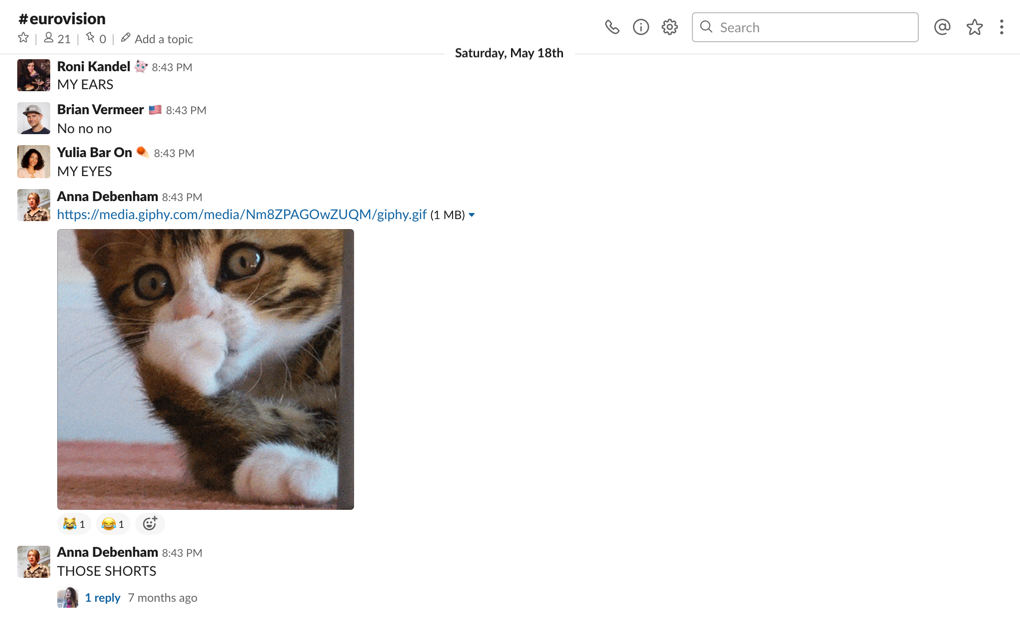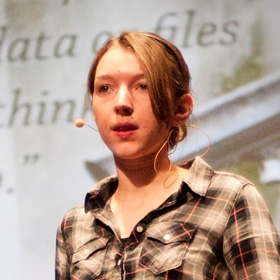Making Distributed Working Work
Four years ago, I started working at a small startup called Snyk that’s based in two locations – London and Tel Aviv. The founders made it clear they wanted to grow headcount in both locations at the same rate, and for the design and engineering skillsets between the two offices to be evenly spread. We’re now at over 200 people and we’re still staying true to that vision, but only by completely changing how we were used to working.
The trend for fully distributed teams is on the rise – companies like InVision and GitLab have entirely remote employees. Snyk is somewhere in between, with small hubs of global team members in homes and shared offices globally alongside our main London, Tel Aviv, Boston, Ottawa and Bay Area offices.
Our R&D teams are based entirely in London or Tel Aviv, with a few employees working around Europe. Rather than have Team A working in one office and Team B working in another, we’ve deliberately designed it so that no R&D team at Snyk has all its members in one location. We could design our teams to be all co-located so that everyone’s in the same room, but we don’t.
When I explain this setup to people, I’ll often get a response of bewilderment – why do it this way? It sounds like a pain! Increasingly though, the reaction is positive – usually from people who’ve worked in a distributed team before where departments are split neatly between locations. They’ve experienced an “us vs them” culture, with work being thrown over the fence to designers or engineers in different timezones. They’ve been at the mercy of the decision makers who are all in the head office. This is exactly what we wanted to avoid. We wanted the company to feel like one team, across many locations.
It’s not perfect – I do miss the things that working in the same location brings such as collaborating on a whiteboard, or having planning documents stuck on the wall for the team to refer to. Pre-distributed working, I used to sit next to a designer and we’d bounce ideas off each other. Now I have to make the extra effort to schedule something in. Managing people remotely is also tough – I can’t easily see that a team member is having a bad day and make them a cup of tea.
But on the whole, it works pretty well for us. The time difference between London and Tel Aviv is a comfy 2 hours, and in Tel Aviv, the week runs from Sunday to Thursday, meaning there’s just a single day in the week when all our teams aren’t working. This makes the week feel like the ebb and flow of a tide – my Mondays are very busy, but on Fridays, half the team is off so there are barely any meetings – ideal for deep focus time.
So how do we make this distributed-but-also-co-located hybrid thing work?
Level the playing field
Firstly, that “us vs them” mentality I mentioned is the key thing to avoid to maintain a positive distributed work culture. Avoid the term “remote team”, as that has a sense of otherness. Instead, refer to your team as “distributed”. It’s such a small change that has the effect of bringing everyone onto the same level.
Also, consider your video conferencing etiquette – if you’ve got a large part of your team in one location, with just one or two members who are dialling in, you could end up with a very one-sided conversation. The room with the most people in it has a habit of forgetting the person they can’t easily see. Even if you’re in the same room, dial in individually so that everyones faces are the same size, and you’re addressing all the participants rather than just those in the same room as you.
Invest in tools that help communication
Early on, we invested in tools that would help make communication between locations as seamless as possible. I’m not talking about those screens with wheels that follow co-workers around a room to recreate a manager breathing down their neck (although now I think of it…). I’m talking about the familiar ones like Slack, Zoom and Notion.
Use a single tool where possible to reduce friction between teams so there’s no confusion as to whether you’re having a call over Google Hangouts, Zoom, Skype or whatever else is fashionable to use this year. Same with meeting notes – keep them in one place rather than scattered across Dropbox, Email and Google Docs.
Remote pair programming has also got a lot easier. We used ScreenHero before it got acquired and lost its remote control functionality – but there are some great alternatives out there like USE Together. You might also have collaboration tools built into your code editor, like Visual Studio’s Live Share, and Atom’s Teletype.
If teams are complaining about bad audio, don’t skimp – invest in better microphones, speakers and sound-proofing. You won’t get the benefits of working as a distributed team if there’s a barrier between communication. Ensure the internet is stable in all locations. Also, it sounds basic but make sure teams have somewhere to take a call in the first place, particularly 1:1s which shouldn’t be done in the open. Previous places I’ve contracted at had people dialling into meetings in stairwells, shower rooms and even toilet cubicles. Take care not to make the experience of working in a distributed team end up harming the experience of working in an office.
Open a window
For as long as we’ve had offices, we’ve had a fixed camera and TV screen setup between them that acts as a “window” between locations. The camera is on all the time, and we turn the microphone on once a day for standup (or whenever someone wants to say hi). When I turn on the TV in the morning, I can see the Tel Aviv office already working. At midday, our Boston office comes online, followed shortly after by our Ottawa office. It’s incredible what a difference this has made to make us feel more like one office.

Distributed meetings
With the time differences and weekday shift, there’s a condensed timeframe in which we can collaborate. It’s not as bad as it could be (I pity my fellow Londoners who work for companies based in California), but the hours between 9am and 4pm Monday to Thursday for us are at a premium. This means the meetings we have need to be a good use of everyone’s time. When we can’t find a time that works for everyone, we record the meeting. But even if everyone can make it, we still take notes.
The notebook brand Field Notes have a slogan “I’m not writing it down to remember it later, I’m writing it down to remember it now.”. This is a reminder that it’s not always the notes themselves that are useful, but the act of taking them. Where they’re really powerful is when you share them in real time. In Kevin Hoffman’s book ‘Meeting Design’, he recommends the notetaker shares their screen while taking notes so that everyone can participate in making sure those notes are accurate. Having the notes on the screen also helps focus the conversation – particularly if you have an agenda template to start with. It means you’ve got a source of truth for someone who mis-remembers a conversation, and you’ve got something to look back on in the next meeting so you don’t repeat yourselves.
Another tip we’ve taken from Kevin’s book is to have a kanban board for standing meetings, where everyone can add a topic. That way, you always have a backlog of topics to discuss in the meeting. If there aren’t any, you can cancel the meeting!

Don’t get into bad habits when you’re lucky enough to be sharing a single space – keep documenting conversations and decisions in the same way you would with a distributed team, so that future you can remember, and future team members can gather that context.
Team bonding
I always think the best way to bonding with people is over a meal – isn’t that what Christmas dinner is great for? As a distributed team, we can’t do that. We could try and recreate it (even just for the comedy value), but it’s really not the same. We have to try something different.
Enter Eurovision. For those of you outside Europe, imagine a cheesy pop song contest where each country performs their own song and everyone votes for the winner. This year, it was held in Tel Aviv, so dozens of us sat down to watch the live stream. We set up a Eurovision Slack channel and shared our horror in real time.

But Eurovision only happens ones a year, so we’ve extended shared experiences into multiple “hobby” Slack channels: we have one for food fans (#fun-foodies), football fans (#fun-footies), and even sourdough fans (#fun-sourdough). There’s also a weekly “drink and sync” where office-less team members join a video call and chat over a beer, coffee, or juice depending on the time of day for those that dial in. One team runs a movie club where they choose a video that’s relevant to their team’s work (such as a conference talk) and watch it together at the same time.
Onboarding new team members can feel quite impersonal if their manager isn’t in the same office. Starting your first day in an office full of strangers, where the only interaction with your manager is over a video call can feel daunting. And as a manager, I get anxious about my new hire’s first day – was there someone there to greet them and show them where they sit? Was everything set up for them? Did they have someone to eat lunch with? So we’ve been rolling out an “onboarding buddy” scheme. This is someone local who can help the new hire settle in to their new surroundings. It’s someone to chat to, share a coffee with, and generally look out for them.
We also use a Slack app called Donut which pairs employees up for informal chats to get to know each other. You get paired with someone random in the company and it helps you schedule a call with them. This is to encourage cross-pollination across teams and locations.
What distributed teamwork has taught us
There’s a lot that we’ve learnt about working well as a distributed team. We try and recreate the good things about sharing a physical space, and make them feel just as natural in the digital space, while also compensating for the lack of intimacy from being thousands of miles apart.
Mel Choyce’s 24 ways article Surviving—and Thriving—as a Remote Worker stresses the value of remote working, and the long term benefits it has had.
Working remotely has made me a better communicator largely because I’ve gotten into the habit of making written updates.
I think in a lot of ways, the distance has brought us closer. We make more of an effort to check in on how each other is doing. We document as much as we can, which really helps new hires get up to speed quickly.
By identifying what we find valuable about working in the same room, and translating that to work across locations, we find collaboration easier because we’re no longer strangers to each other. We might not be able to have those water-cooler moments in the physical realm, but we’ve done a good job of replicating that online.
About the author
Anna Debenham lives in London and is a Product Manager at Snyk.
She’s the author of Front-end Style Guides, and when she’s not playing on them, she’s testing as many game console browsers as she can get her hands on.







